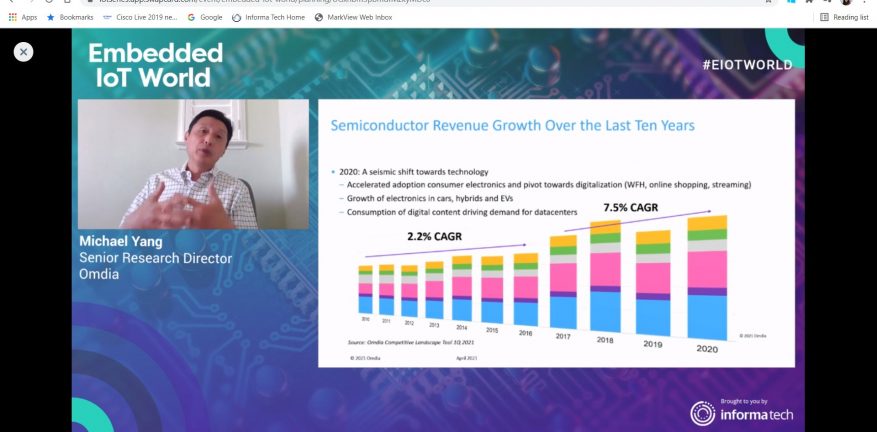Semiconductor industry growth spikes, but supply remains constrained
While the semiconductor industry is white-hot and demand for chips is increasing, healthy chip supply is another story.
While these chipsets are becoming more intelligent and capable for a range of tasks, such as video streaming and autonomous driving, they are also suffering from significant shortages that could disrupt sales for a variety of products and services.
“The hottest topic currently facing the industry is capacity constraints,” said Michael Yang, senior research director for Omdia, at the recent Embedded IoT World conference.
COVID-19 fueled a series of supply-side issues for many electronics products. Further, in 2020, geopolitical tensions escalated in regions like Asia and with companies such as Huawei, further tightening the spigot on the supply chain..
According to Clear Metal, which monitors more than 90% of ocean freight, nearly 7% of ocean freight wasn’t expected to make it out of Chinese ports in the first quarter of 2021. COVID-19 has only augmented those delays, in shipping but also at the last mile of delivery.
Semiconductor Industry Growth Fueled by Increasing Digitization
Increasing digitization, more remote work and remote operations as well as increasing consumer demand for electronics have sparked growth in the semiconductor industry. More capable chipsets enable a variety of capabilities that consumers are clamoring for, Yang said.
“Moving forward, the demand is exploding for processors,” driven by consumer digitization, online shopping and consumption of digital streaming media, Yang said.
In addition, data center build-outs and use of electric and autonomous vehicles have increased demand for semiconductors. “The EV revolution is definitely on,” Yang said.
Increasing digitization in virtually every aspect of the economy and society has occurred alongside greater frequency of natural disasters such as wildfires as well as disruptive events such as the COVID-19 pandemic. These emergencies have only augmented the need for contactless, digital avenues to solve problems.
To read the complete article, visit IoT World Today.

















